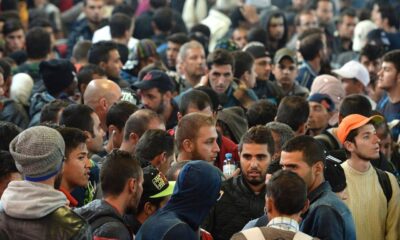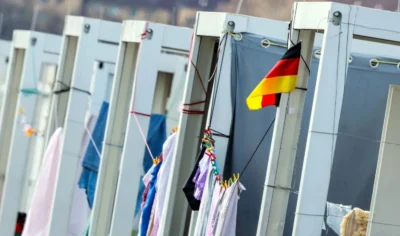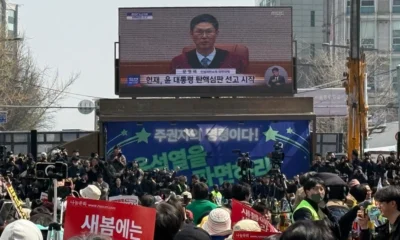Asia
War devastated Afghans deserves mercy
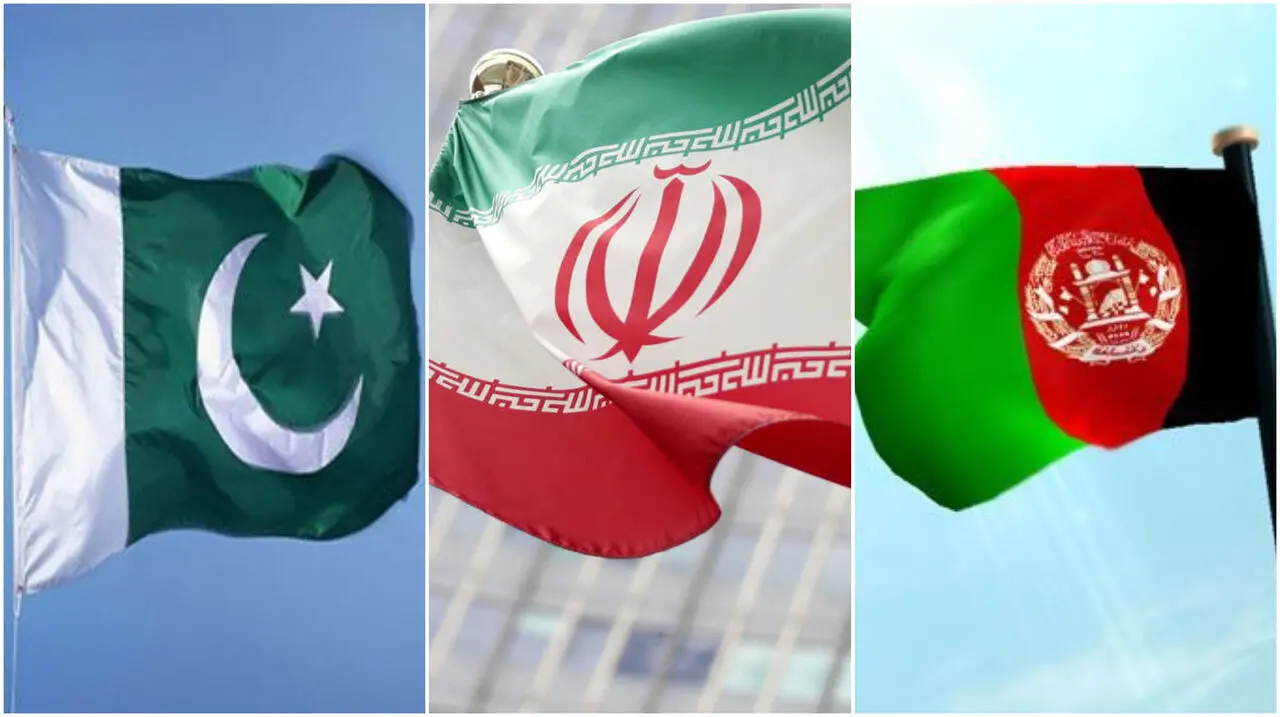

Author: Shamim Shaid
The Afghans, who on the grounds of fear for their lives, left the country after the empowering of Taliban in mid-August 2021, are still forced to stumble across the world especially in neighboring countries, including Pakistan. Still hundreds of families, mostly women and children, are waiting for their turn to land in any Western European country.
Though a large number of people, after the Taliban’s second takeover of Kabul succeeded in slipping to Europe, US, Central Asian countries and the Middle East. And thousands of others due to the proximity of geographical location had moved to Iran and Pakistan. By the way, there are not many differences in policies of Iran and Pakistan in terms of continuing the war and conflict and cropping up obstacles in return for peace and stability in Afghanistan, but in terms of providing shelter to refugees and treating them, the approaches of both the neighbors are in contrast.
Afghans in Pakistan and Iran
People of almost all areas and regions of Pakistan having origin either from Afghanistan or belong to Afghan tribes scattered throughout the Indian subcontinent, therefore they are having blood relations and sympathies with the Afghans irrespective of policies of ruling corridors if Rawalpindi and Islamabad. Not only people from all four provinces across the country, but even the dwellers of Azad Kashmir and Gilgit-Baltistan also cannot remain silent on the abuse of Afghan refugees or residents by state institutions. While in Iran, the policies are different for the Afghans even since the days of civil conflict and former Soviet Union invasions.
The abuses of Afghans in neighboring countries, especially in Islamic Republic of Iran will be mentioned in the dark chapters of history. For this reason, after the Taliban takeover on August 15, 2021, majority people from Afghanistan came to Pakistan and a limited number of them, fortunately or unluckily, have reached Western countries. Unfortunately, in the sense that most of them escaped and detached from their loved ones and their motherland and – bad luck in the sense that those who have a luxurious and possessive lifestyle in Afghanistan will now be counted among the immigrants in alien lands or countries. However, Almighty Allah gifted these people with survival at the time when thousands were either made hostages or eliminated in fake encounters by Taliban. But still the majority are in wait and facing miseries in hotels and apartments at Islamabad, Peshawar and other places throughout Pakistan.
No one can deny political victimization of civilians
Majority of Afghans who are stranded at scattered areas of Pakistan were either directly remaining occupants of important offices in government, semi government, diplomatic missions, foreign funded non government organizations and other lucrative jobs. On such grounds, their lives had to be at danger after Taliban takeover, therefore, their act of rushing to neighboring countries could be appreciated and deserve support and encouragement on humanitarian grounds. No one can deny the political victimization of civilians at the hands of the Taliban in some parts throughout Afghanistan. According to the United Nations and other international organizations, during one year, the Taliban officials allegedly killed around 3,000 people on political grounds, while forcing hundreds of women into marriages with self-styled commanders and Amirs.
Besides others, the Taliban regime has shuttered women’s schools and deprived them of their legitimate right to education. After the occupation of Kabul by the Taliban, the majority of people who are willing or waiting to move to Pakistan and go to other countries are women and children. Many of them are staying with their close relatives or friends or in rented houses at Islamabad, Peshawar and other cities.
During frequent visits to a few hotels in Islamabad, it was observed that a large number of boys and girls are among those waiting for their turns of flying to foreign countries. Inside hotels in Islamabad and other rented apartments, these people are confined to small rooms day and night. There is no friendly situation for these unfortunates who are victims of imposed wars and hostilities in their motherland.
Full support to the Taliban
Ironically, despite not recognizing the Taliban regime, the US lead allies are extending every sort of support to the Taliban government. Irrespective of US apparent anger against the Taliban regime, compared to 90’s, now the present Emirate Islami is powerful in Afghanistan. All US led allies are fully cooperating with the Taliban government. These allies are completely silent spectators to the ongoing inhumane treatment of people in Afghanistan. While many regional countries, including Pakistan and Iran, have adopted policies beneficial for the Taliban government in Afghanistan.
Whatever is reaction but it is crystal clear that the one time powerful and United Afghanistan has been made crippled due to imposed wars and hostilities. As a result of these imposed wars and hostilities, the Afghan society is ahead with destruction and erosions. Afghanistan is no longer a threat to any country for the next one century. But the Afghans living in exile would emerge as problematic for the host countries in near future.
Afghans not pose threat to anyone
The criminal silence on the current situation in Afghanistan and the treatment of Afghans in foreign countries including neighboring countries should be broken now. The people of Afghanistan, who have been fighting for almost six decades, can no longer pose any threat to any neighboring or regional country. The Afghans as a nation now deserve sympathies and mercies in the wake of stock of miseries, hardship and even threats to their survival both in and outside of Afghanistan.
The article was originally written by Shamim Shaid, and translated to English from Urdu.
Translator:
Asia
Japan diverges from G7, urging restraint in Israel-Iran conflict

Japanese Prime Minister Shigeru Ishiba has affirmed Tokyo’s position of calling for “maximum restraint” from both Israel and Iran, despite a G7 statement earlier this week that supported Israel’s “right to self-defense.”
During a meeting of ruling and opposition party leaders on Thursday, Ishiba stated, “What the foreign minister said is the stance of the Japanese government. The G7 is the G7,” as reported by Tomoko Tamura, head of the Japanese Communist Party.
Japan, a close US ally in Asia, has long maintained friendly relations with Iran and has historically adopted a neutral approach to Middle East diplomacy, distinguishing itself from the pro-Israel stance of US administrations. Tokyo relies on the Middle East for the overwhelming majority of its crude oil imports.
G7 leaders convened in Kananaskis, Canada, and issued a statement backing Israel’s attacks on Iran. The statement affirmed Israel’s right to self-defense and condemned Iran as the “main source of regional instability and terrorism.” On June 13, when Israel’s attacks on Iran began, Japanese Foreign Minister Takeshi Iwaya declared: “The use of military force while diplomatic efforts are ongoing… is completely unacceptable and a source of deep regret. The Japanese government strongly condemns these actions.”
Iwaya added, “Japan is gravely concerned about the continuation of retaliatory attacks and strongly condemns any actions that could further escalate the situation.”
He continued, “Japan urges all parties to exercise maximum restraint and strongly calls for a de-escalation of tensions.”
During the meeting of party leaders, Tomoko Tamura, head of the Japanese Communist Party, highlighted the apparent contradiction between Iwaya’s statements and the joint G7 communiqué, suggesting the government was applying a “double standard.”
Prime Minister Ishiba responded, “What the foreign minister said is the stance of the Japanese government. The G7 is the G7.”
Meanwhile, the foreign minister announced at a press conference on Friday that a total of 87 Japanese nationals and their family members had been evacuated by land from Iran and Israel. Sixty-six individuals were evacuated from Iran to neighboring Azerbaijan, and 21 were evacuated from Israel to Jordan.
Following additional requests from Japanese citizens, a second land evacuation from Iran is scheduled for Saturday. Currently, there are approximately 220 Japanese nationals in Iran and about 1,000 in Israel.
In preparation for potential air evacuations, the government plans to dispatch two Air Self-Defense Force military transport aircraft to Djibouti in East Africa to have them on standby. With airports in Iran and Israel closed, Iwaya noted that the aircraft could be used if, for example, the airports reopen and conditions permit an airlift.
Asia
Iran-Israel war: Why US discusses regional conflict with Pakistan
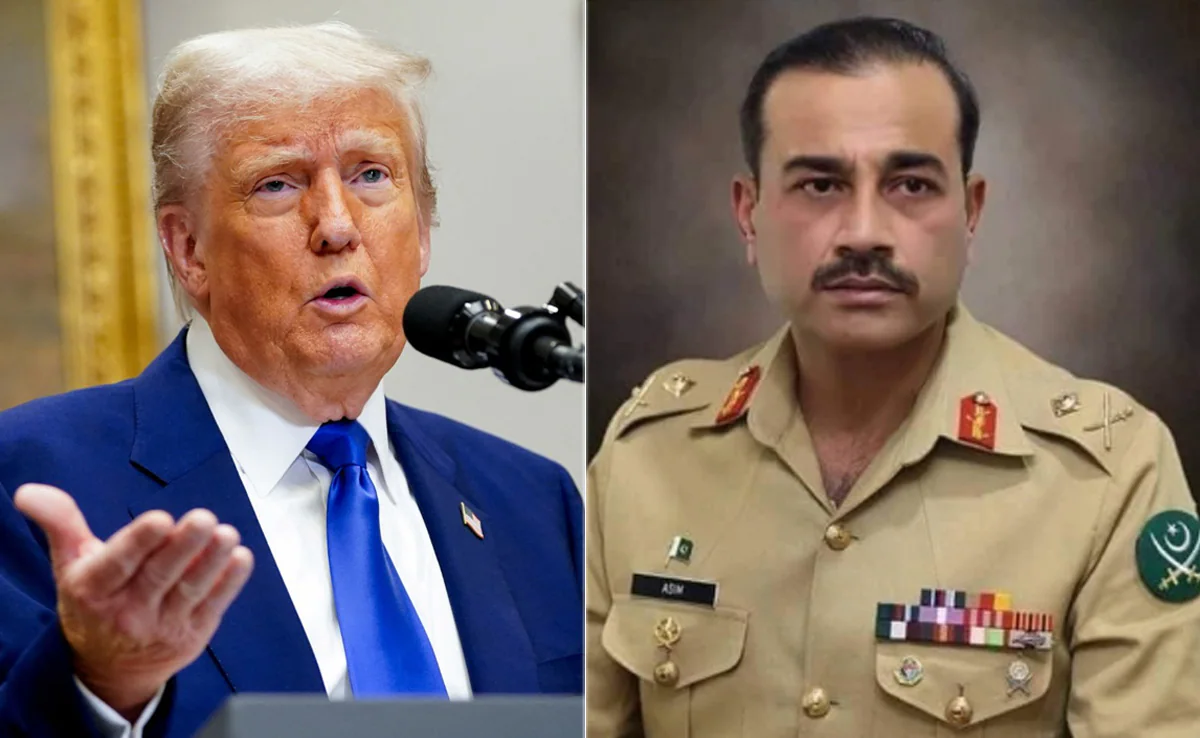
US President Donald Trump and Pakistan’s Army Chief General Asim Munir held a special and important meeting during a time when tensions are rising in the Asian region. The meeting was held on Trump’s invitation and was not open to the media. However, both sides have released official statements afterward, which states that the main topics were discussed
The meeting focused on the ongoing conflict between Iran and Israel, Pakistan–India relations, especially the Kashmir issue, the situation in Afghanistan and future US–Pakistan cooperation.
Pakistan has recently improved its strategic position in the region. It has shown strong ties with China and is the only South Asian country openly supporting Iran in its conflict with Israel. Meanwhile, Pakistan remains an important player in Afghanistan.
Why the Pakistani Army Chief was invited to the US?
Although Pakistan has an elected civilian government, important decisions—especially related to foreign affairs and security—are often handled by the military. That’s why General Asim Munir was invited to meet Trump instead of the Prime Minister, General Munir’s influence has grown recently. After tensions with India, he was given the title of Field Marshal. His meeting with Trump is seen as a sign of his importance in both Pakistani and international politics.
According to the Pakistan Army’s media wing (ISPR): General Munir thanked President Trump for helping to ease recent tensions between Pakistan and India. Trump praised Pakistan’s role in fighting terrorism. Both agreed to work together in the future, especially in: Trade, Technology Minerals and energy Artificial intelligence Crypto currency and regional peace efforts as well.
President Trump also appreciated General Munir’s leadership during difficult times. Munir invited Trump to visit Pakistan, and Trump reportedly accepted the offer in principle.
Why US former peace envoy to Afghanistan, Khalilzad is not trusting Pakistan’s army chief
Former U.S. diplomat Zalmay Khalilzad criticized the meeting. He said General Munir cannot be trusted and reminded the U.S. that Pakistan has supported groups that harmed American soldiers in the past. According to Khalilzad, General Munir may be trying to get U.S. support for his interests in Afghanistan, which he believes could be risky for America.
Though no official list of US demands was made public, reports suggest a meeting was held in Saudi Arabia earlier, where American officials spoke with top Pakistani leaders. During that meeting, the U.S. reportedly made four key requests: Pakistan should help the U.S. in counterterrorism operations when needed. Pakistan should slowly reduce its relations with China. Pakistan should recognize Israel after Saudi Arabia does. If the U.S. attacks Iran, Pakistan should support the U.S. instead of staying neutral.
These demands are similar to earlier U.S.–Pakistan arrangements during the Cold War and the War on Terror.
What could be expected in the future?
This meeting could mark the beginning of a new phase in US–Pakistan relations. In the past, Pakistan helped the U.S. during the Soviet-Afghan War and after 9/11. Now, with tensions involving Iran, India, and Afghanistan—and China expanding its role—the U.S. may again be looking to Pakistan as a key partner in the region.
Time will tell whether this leads to a long-term partnership or just another temporary agreement based on short-term goals.
Asia
China pledges aid and signs friendship treaty at Central Asia summit
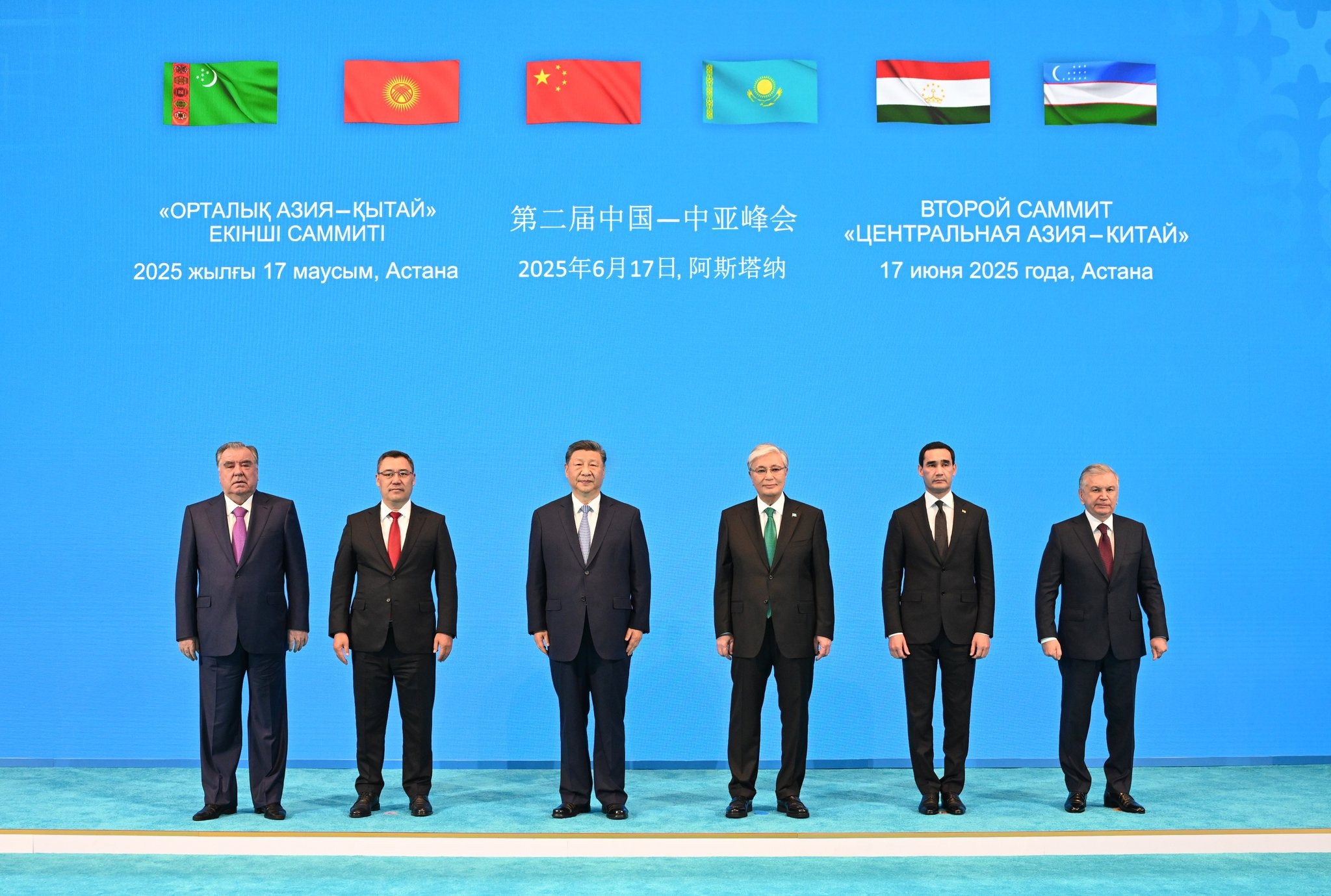
China concluded its latest engagement efforts in Central Asia on Tuesday by pledging 1.5 billion yuan (US$209 million) for livelihood and development projects in the region.
The six nations participating in the second China-Central Asia Summit also signed a historic permanent friendship treaty.
“China is ready to provide 1.5 billion yuan in grant assistance to Central Asian countries this year to support livelihood and development projects of common interest to each country,” Chinese President Xi Jinping stated in his opening address at the summit in Astana, the capital of Kazakhstan.
“Additionally, China will offer 3,000 training opportunities to Central Asian countries over the next two years.”
Xi described the signing of the Permanent Good-Neighborliness and Friendly Cooperation Agreement as a milestone in relations between the six countries, calling it “an innovative initiative in China’s neighborhood diplomacy and a contribution that will benefit future generations.”
China has signed similar agreements with Russia and Pakistan.
Xi also emphasized the need for cooperation in a world that has entered “a new period of turbulence and transformation.”
State news agency Xinhua quoted Xi as saying, “There will be no winner in a tariff and trade war. Protectionists and hegemonists will harm both others and themselves.”
“The world should not be divided, but united; humanity should not revert to the law of the jungle, but work to build a common future for mankind,” he added.
Xi also announced the establishment of three cooperation centers focusing on poverty reduction, educational exchange, and desertification control, as well as a trade facilitation platform under the China-Central Asia cooperation framework.
In a statement on Wednesday, the Chinese Foreign Ministry said that China and the Central Asian countries are eager to improve road and rail connectivity and plan to open more direct flights to and from China to increase mutual exchange.
China will consider simplifying visa procedures with the five Central Asian countries, while all parties will study the feasibility of opening consulates.
Together with Kazakhstan, Kyrgyzstan, and Tajikistan, China will accelerate the modernization of existing port facilities and assess the need for new ones.
The summit was the second of its kind, following the inaugural one held two years ago in Xian, China.
These efforts reflect a deepening of China’s relations with Central Asia, which have historically focused on areas such as transportation infrastructure.
The region is a key part of the Belt and Road Initiative, Beijing’s global development strategy, and China has invested heavily in energy pipelines, infrastructure, and mining projects in Central Asia.
However, China also wants to expand cooperation into sustainable development and renewable energy.
These investments were a major focus of Xi’s meetings with the leaders of the five Central Asian states.
During the meetings, Xi stressed the need to uphold multilateralism and the global trade order. This is part of Beijing’s effort to position itself as a more reliable partner following the US tariff war.
Meeting with Turkmen President Serdar Berdimuhamedov, Xi called for expanding gas cooperation and exploring opportunities in non-resource sectors.
Security was also on the agenda.
“The two countries should further strengthen law enforcement, security, and defense cooperation, jointly combat the ‘three forces,’ and enhance cooperation in cybersecurity,” Xi said, referring to “terrorism, separatism, and extremism.”
Beijing views these forces as threats to national and regional security, and Xi has repeatedly emphasized this stance in his meetings with Central Asian leaders.
While China’s presence in Central Asia has historically focused on economic investments, its influence in the security sphere is growing through joint counter-terrorism drills, training programs, and aid.
This is particularly true in Tajikistan, which shares a long border with Afghanistan, where China is concerned about terrorists returning to carry out operations in its western Xinjiang region.
In his meeting with Tajik President Emomali Rahmon, Xi called for deeper cooperation in law enforcement and security to combat the three forces.
He also called for increasing bilateral trade and investment and improving transportation infrastructure.
Rahmon said Dushanbe would expand cooperation in new areas such as new energy, green industries, and artificial intelligence, and would “strengthen coordination with Beijing for the Shanghai Cooperation Organisation (SCO) to play a greater role.”
The SCO is the main forum for relations between China and the landlocked region. This political, economic, and security bloc was founded in 2001 by China, Kazakhstan, Kyrgyzstan, Russia, Tajikistan, and Uzbekistan. Turkmenistan, reflecting its commitment to “permanent neutrality,” is the only Central Asian country outside the organization.
On Tuesday, Xi also held talks with Kyrgyz President Sadyr Japarov, describing relations between the two countries as being in “the best period in history.”
Xi said the construction of the China-Kyrgyzstan-Uzbekistan railway is a top priority, but new growth drivers such as clean energy, green mining, and artificial intelligence should also be developed.
The talks followed the signing of cooperation documents between China and the summit’s host country, Kazakhstan, covering trade, investment, technology, tourism, and customs.
Xi asked his Kazakh counterpart, Kassym-Jomart Tokayev, to accelerate cross-border railway projects and the improvement of port infrastructure.
Xi also stated, “Beijing and Astana should be strong supporters of each other in turbulent times.”
According to the Kazakh presidential office, Tokayev described relations between the two countries as stable and “not negatively affected by geopolitical challenges and turmoil or the international situation.”
-

 Diplomacy1 week ago
Diplomacy1 week agoFormer diplomat warns forcing Iran out of the NPT is the greatest danger
-

 Middle East2 days ago
Middle East2 days agoUS to launch major bombing campaign against Iran this weekend, Hersh reports
-

 Opinion2 weeks ago
Opinion2 weeks agoEuropean defense autonomy and Germany’s military role enter a turning point
-
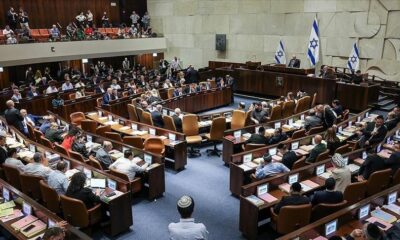
 Middle East1 week ago
Middle East1 week agoNetanyahu’s government survives no-confidence vote as Haredi crisis is delayed
-

 Asia2 weeks ago
Asia2 weeks agoJapan, US showcase B-52 bombers in nuclear deterrence dialogue
-

 Diplomacy1 week ago
Diplomacy1 week agoFormer CIA analyst says Israel used ceasefire talks as a trap
-

 Middle East5 days ago
Middle East5 days agoIran targets Mossad and Unit 8200 in missile attack on Tel Aviv
-

 Middle East1 week ago
Middle East1 week agoIsrael strikes Iran’s nuclear program, killing high-level commanders


